Alan Llavore | Office of Strategic Communication | (909) 537-5007 | allavore@csusb.edu
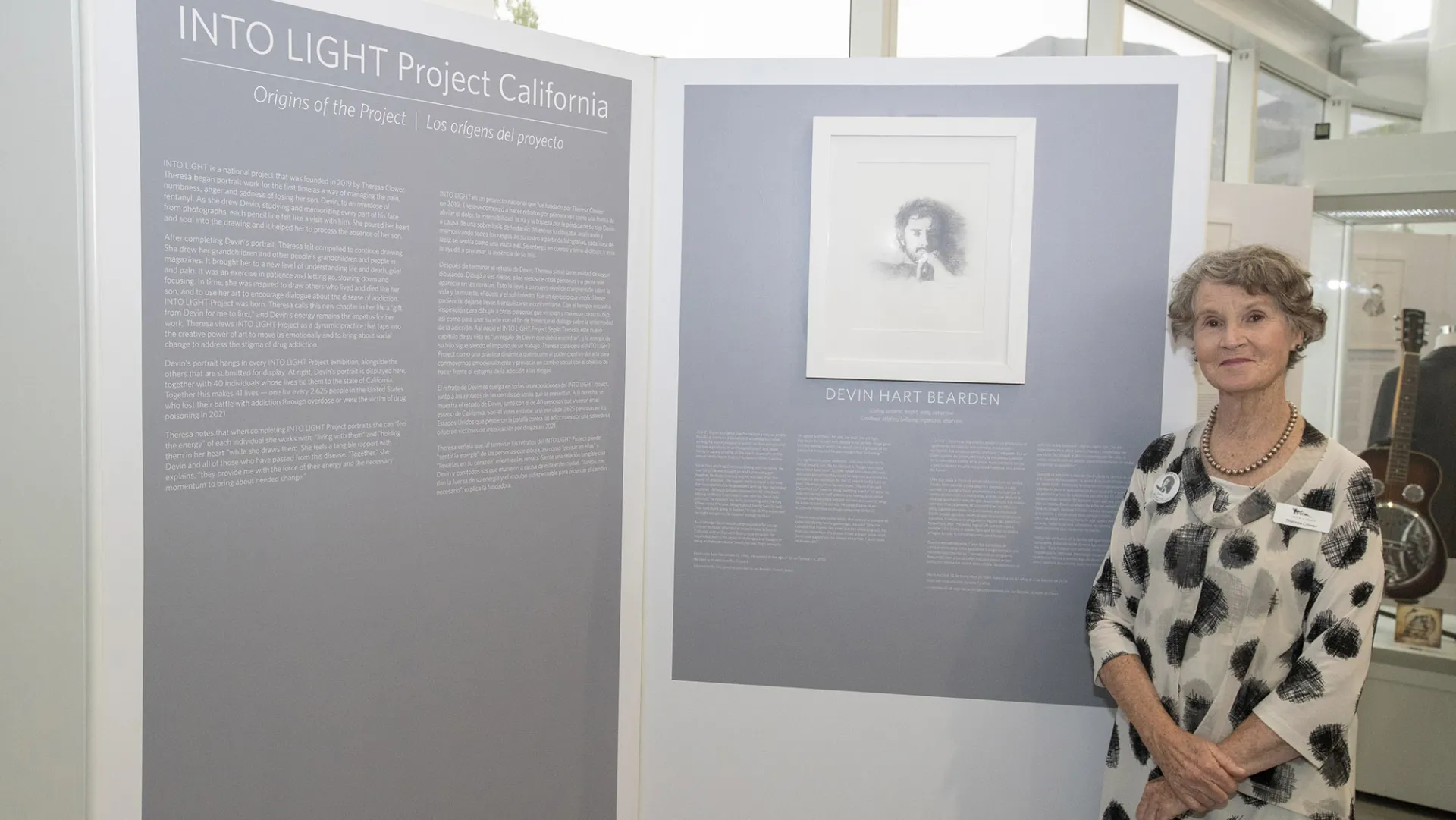
The INTO LIGHT exhibition is ending its run soon at Cal State San Bernardino, yet it will leave an indelible mark on the campus and the community.
The exhibit did more than bring people to the university’s Anthropology Museum during the 2022-23 academic year, it also called attention to substance use disorder (SUD) through a series of engaging events held in partnership with the San Bernardino County Department of Behavioral Health. (DBH).
In recognition of that work, the National Association of Counties (NACo) has selected the California INTO LIGHT exhibition for an Achievement Award in the Arts, Culture and Historic Preservation Category for 2023.
“The INTO LIGHT exhibition at CSUSB was a true partnership between the university and the community,” says Arianna Huhn, director of the Anthropology Museum. “It’s great to see this effort recognized at a national level.”
A closing reception celebrating the exhibition’s achievements will be held from 10:30 a.m.-noon on Wednesday, June 7, at the Anthropology Museum. The event will be hosted by the San Bernardino County Department of Behavioral Health and it is free and open to the public. The museum is located on the third floor of the university’s College of Social and Behavioral Sciences building, in room 306. The exhibition closes to the public on Saturday, June 10, with special weekend viewing hours from 8-11:30 a.m. Admission is always free.
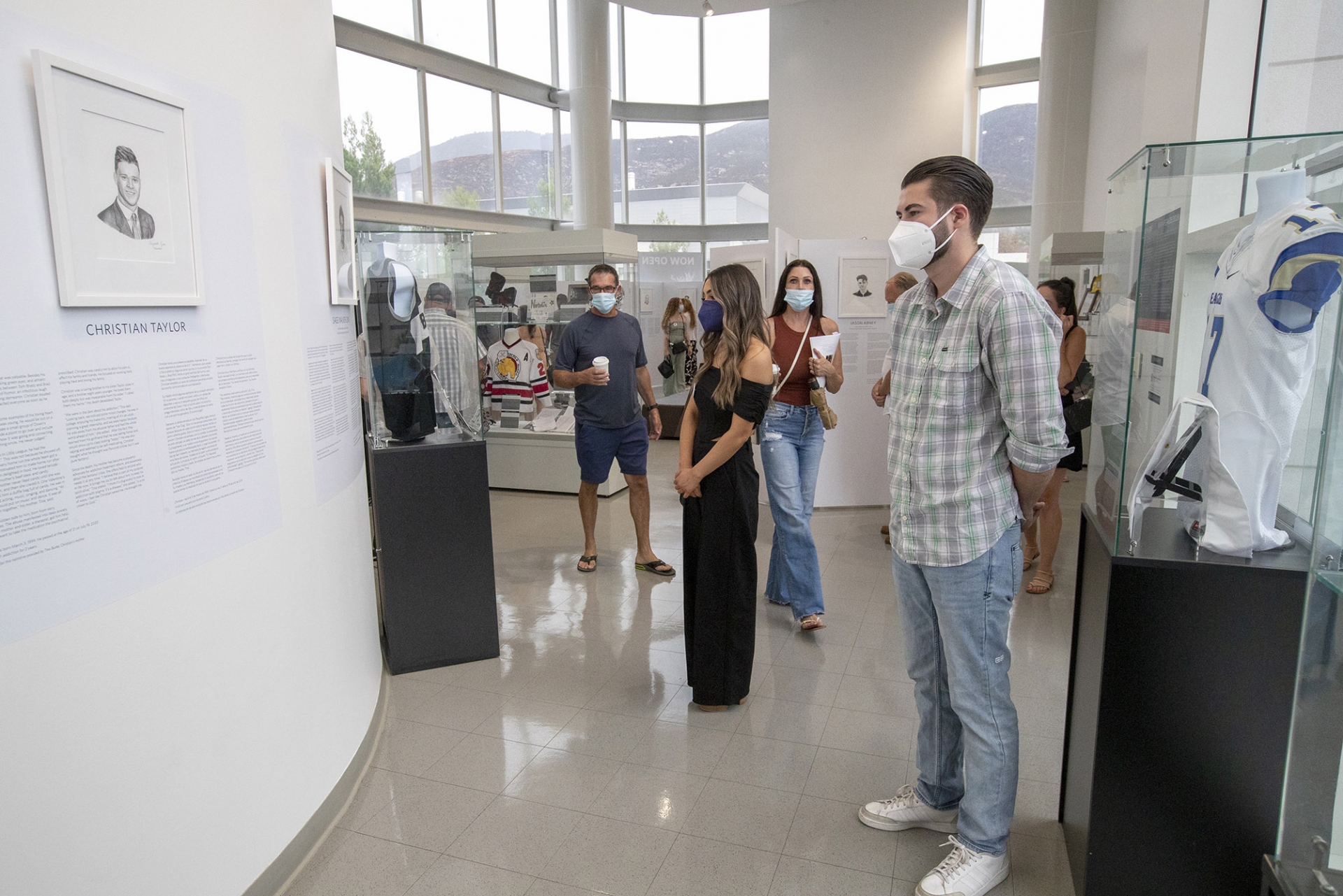
The INTO LIGHT Project formally opened its California show at Cal State San Bernardino’s Anthropology Museum on Sept. 9. The aim of the INTO LIGHT Project is to destigmatize addiction through a unique exhibition in each state, each featuring portraits and stories, of individuals who lost their lives to a drug overdose or drug poisoning in that state.
INTO LIGHT was started by Theresa Clower, who lost her son Devin Bearden to fentanyl poisoning in 2018. Clower took up portrait work as a way of working through her grief. After completing Devin’s portrait, she was inspired to find others who lived and died like her son and to show the extent of the drug epidemic through exhibits involving each state. She aspired to draw their portraits, tell their stories, and start a dialogue around the disease.
Broadening the discussion of SUD, addiction and overdose – and removing its stigma – helps provide some relief for families who have lost loved ones to the overdose epidemic, as well as encouraging those battling SUD to seek help.
“In the U.S. there are persistent negative stereotypes about not only drug users, but also their families. This can make it really difficult for those with SUD to get treatment, and for the families of individuals who die of a drug overdose or drug poisoning to speak openly about their loss,” said Huhn, an associate professor in the CSUSB Department of Anthropology. “This exhibit makes clear that these stereotypes are harmful, and also that the 41 individuals represented in the exhibit – and countless others who have lost their lives to drug use – were loved and that they are dearly, desperately missed by their families.”
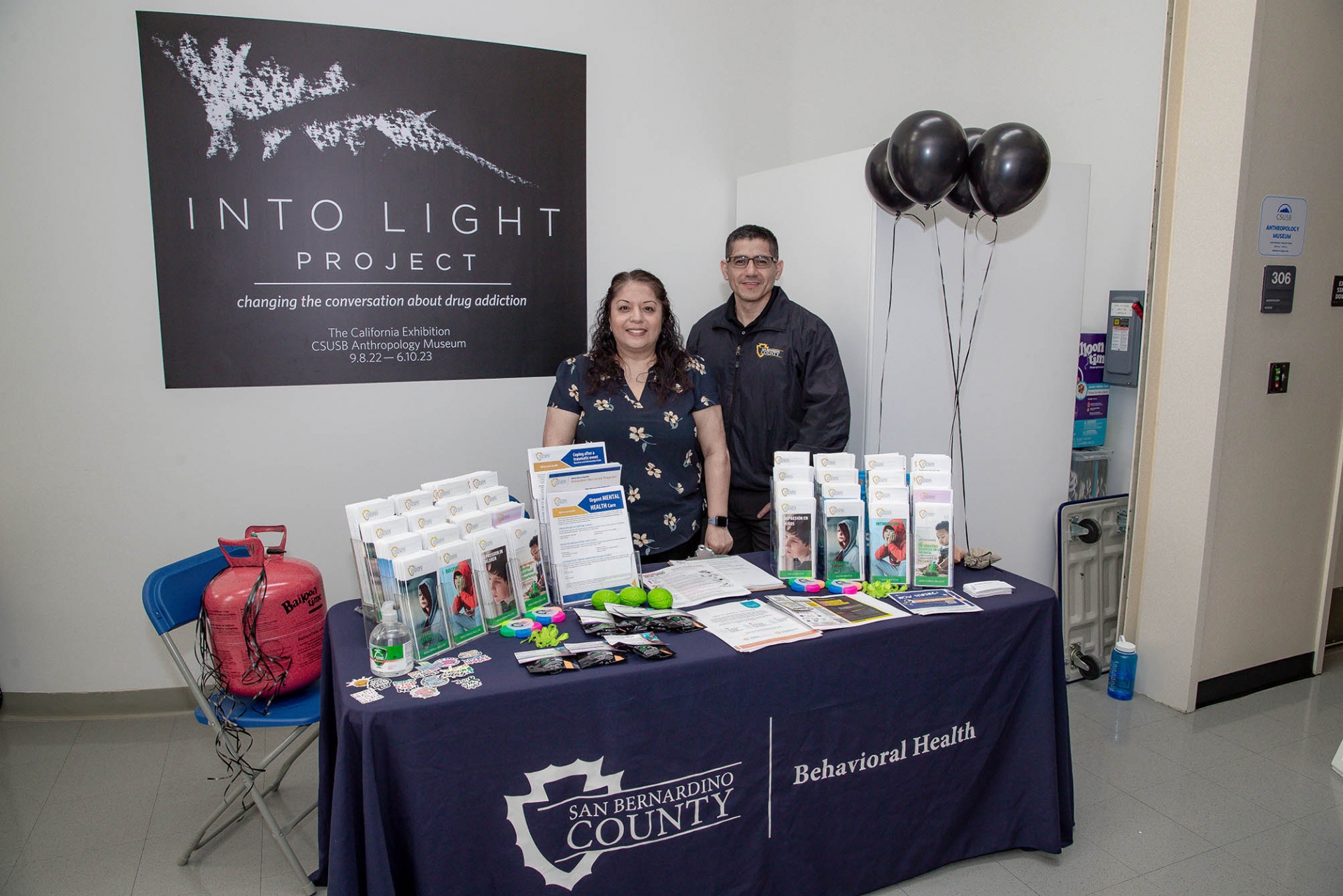
Diane Podolske, director of CSUSB’s Office of Community Engagement, pointed to INTO LIGHT’s collaboration with the university’s masters in counseling program as one of the important components of the exhibit. The graduate counseling program trains future counselors who will work in the community. Under the direction of Lorraine Hedtke of the MS in Counseling program and an international expert in the field of death and grief, the students conducted interviews with individuals who nominated a family member or friend who they lost to a drug overdose or drug poisoning. The interviews were used to prepare a narrative about the individual for the exhibit. The stories highlight the unique aspects of the personality and interests of the person who died as a way to honor the loving relationship that transcends death.
“The transcriptions of these interviews were then analyzed to inform key aspects of the museum exhibition, while also facilitating counseling students’ skills as they prepare to address grief and bereavement with future clients,” Podolske said. “These service-learning experiences benefit the community and also provide valuable learning opportunities for our students.”
Prior to California, INTO LIGHT most recently opened its Florida show. Other states that have hosted INTO LIGHT exhibitions are Maryland, North Carolina, Ohio, Pennsylvania and Virginia. A show in Delaware opens on June 1, and 12 additional states are in various stages of planning their INTO LIGHT exhibition.
According to the Centers for Disease Control, 136 people die each day from an opioid overdose in the United States. Locally, the number of overdose deaths in the Inland Empire has risen dramatically. Between 2019 and 2020, drug-related overdose deaths jumped a staggering 89 percent in San Bernardino County and 50 percent in Riverside County. This is largely driven by accidental overdose and drug poisoning through fentanyl. In 2018 there were 30 fentanyl deaths in San Bernardino County. In 2019 that number rose to 74, and in 2020 to 227. In 2021 there were 309 fentanyl overdose deaths in San Bernardino County.
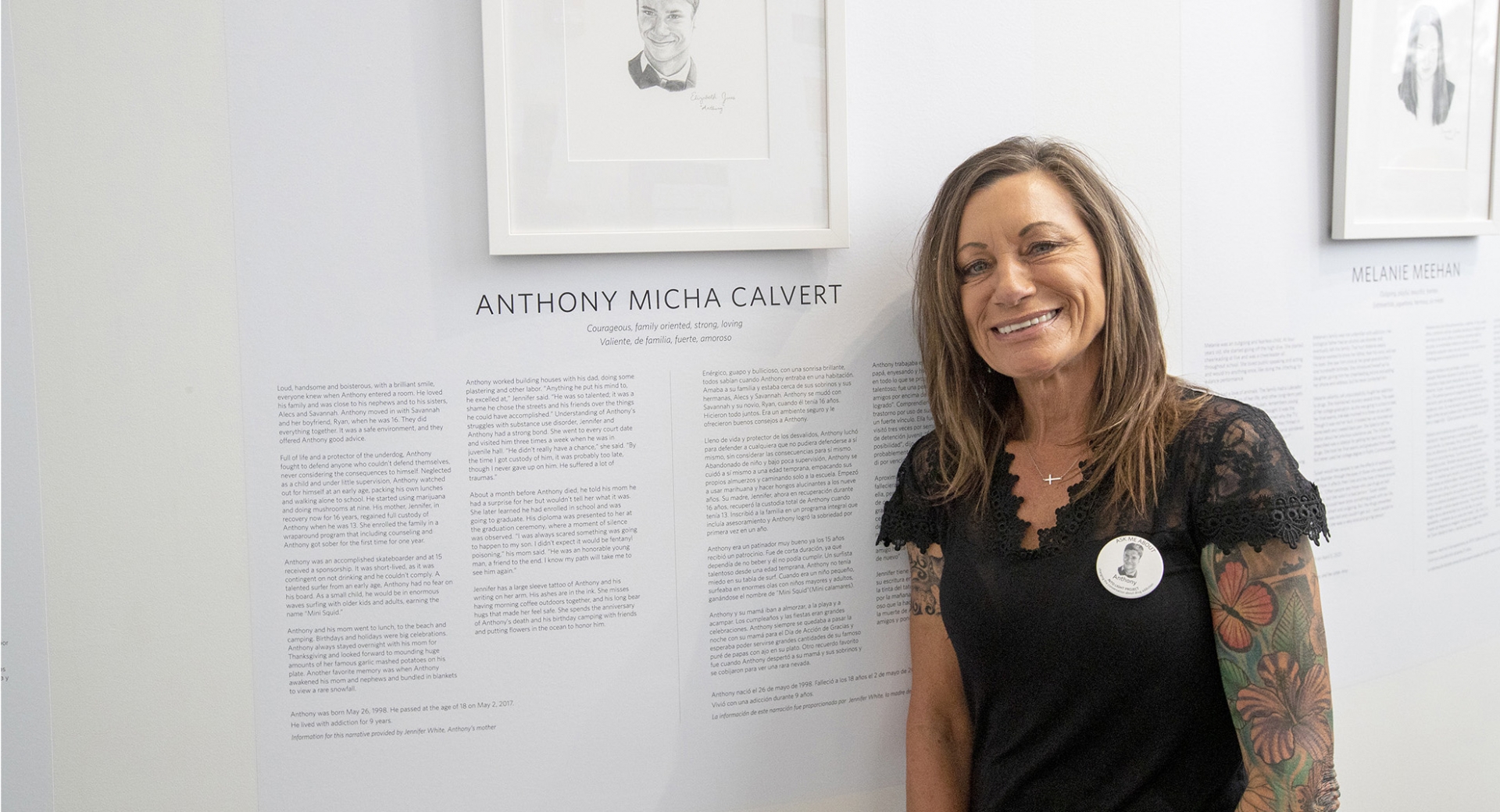
To help counter that, during the California run, the Anthropology Museum and county Department of Behavioral Health hosted a series of Recovery Resource Fairs on campus to raise awareness of the dangers of substance use disorder. Community organizations that provide mental health and substance use recovery services shared their resources, and attendees were trained how to administer Narcan, which is given to people who overdose on opioids.
“DBH, together with Inland Empire Harm Reduction, brought Narcan and fentanyl testing strips to CSUSB for formal training and distribution events at both campuses,” Huhn said. “The eagerness of students, faculty, and staff to participate in these events suggests that these services are wanted and needed by the CSUSB community. I look forward to these events continuing even after the exhibition closes.”
In the fall, during CSUSB’s Homecoming weekend, the museum hosted a town hall event with state Assemblymember James Ramos, D-Highland, a CSUSB alumnus whose district includes the university. Ramos has introduced two bills in the battle against the opioid crisis, AB 1627, on opioid overdose prevention, and AB 1628, social media, electronic content management regarding controlled substances.
Earlier this spring, the museum and county of Department of Behavioral Health hosted a Black Balloon Day event that remembered those who died from substance use disorder and shined a light on the epidemic. Black Balloon Day tables were set up along Coyote Walk (behind the John M. Pfau Library) and in the Anthropology Museum. During the event, the university community and area residents wrote messages to loved ones lost to an overdose.
The messages were attached to black balloons at both locations, creating a visual representation of the number of people whose lives have been touched by overdose deaths. The personal messages were available for passersby to read, personalizing the statistics about overdose deaths and remind all that an overdose can happen to anyone.
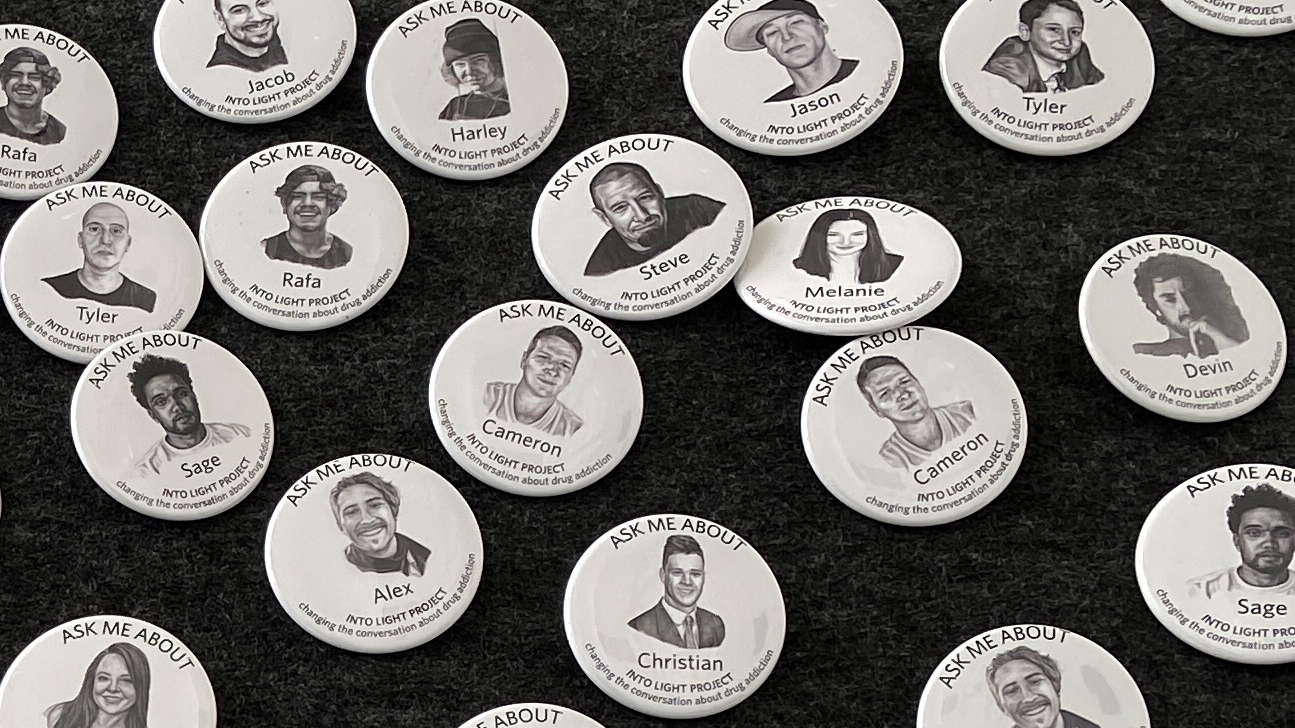
The California exhibit also debuted INTO LIGHT’s “Ask Me About” campaign, through which museum visitors are invited to take a pin that features one of the 41 individuals represented in the exhibition. The goal of the Ask Me About campaign is to extend the stories of the exhibition outside of museum walls, as visitors wear their pin and share what they learned through INTO LIGHT.
For information about alcohol and/or drug abuse treatment options, call the San Bernardino County Department of Behavioral Health at (800) 968-2636 for a free and confidential assessment and help finding the appropriate treatment.
For more information on available services, visit the county Department of Behavioral Health website.